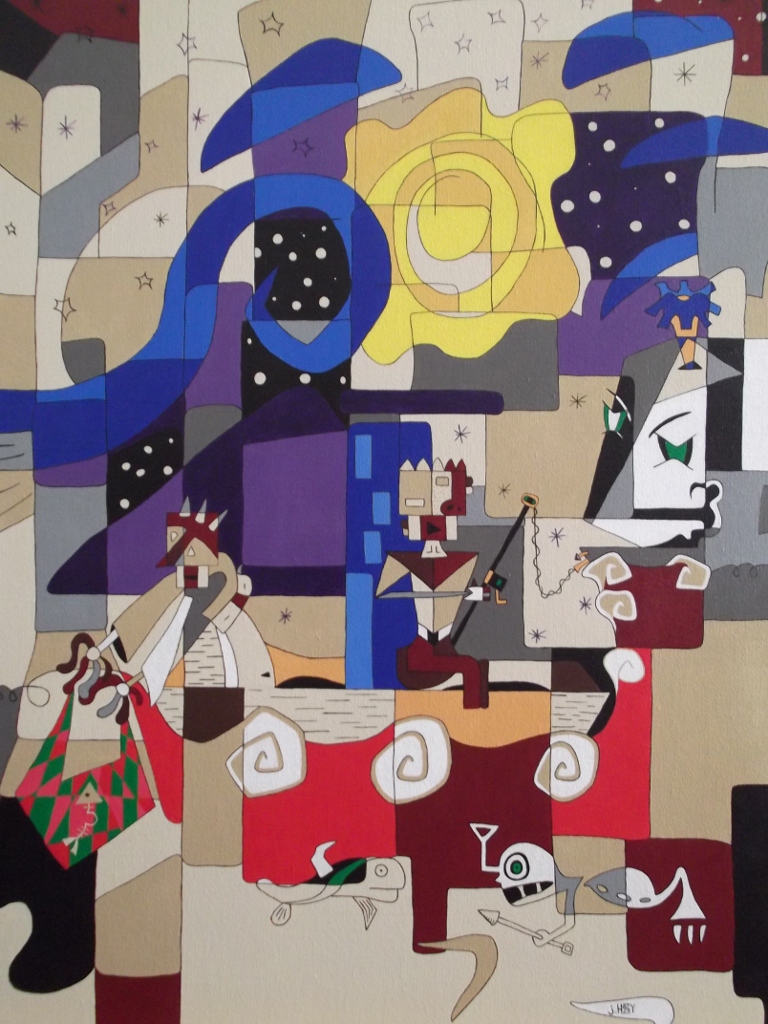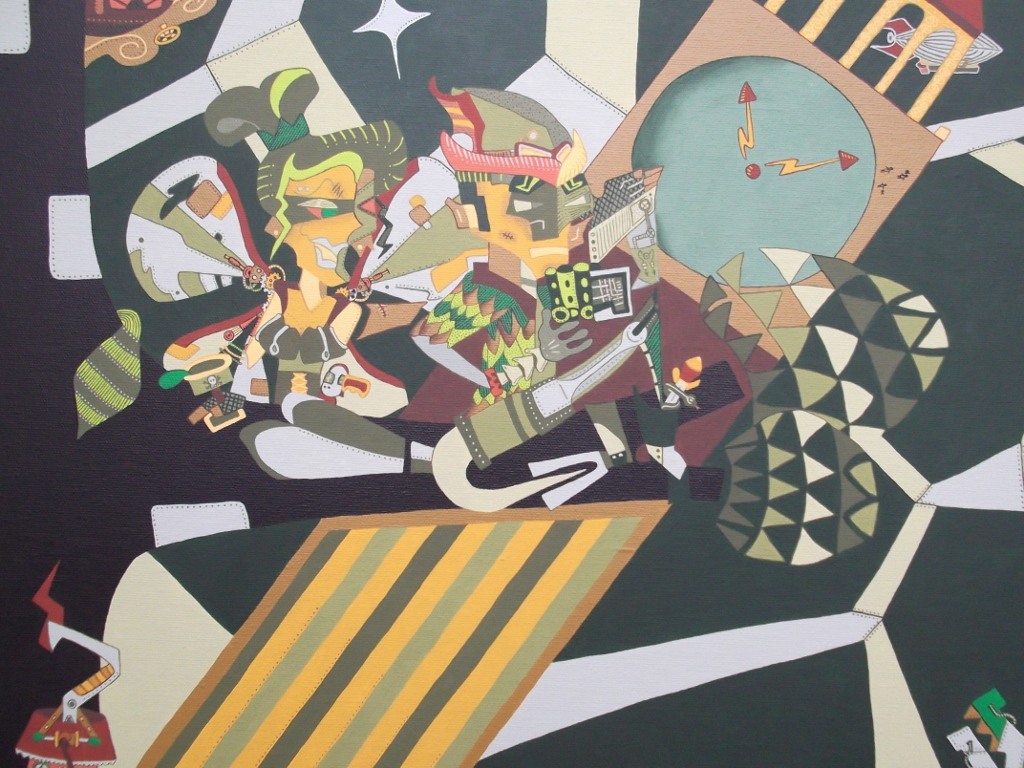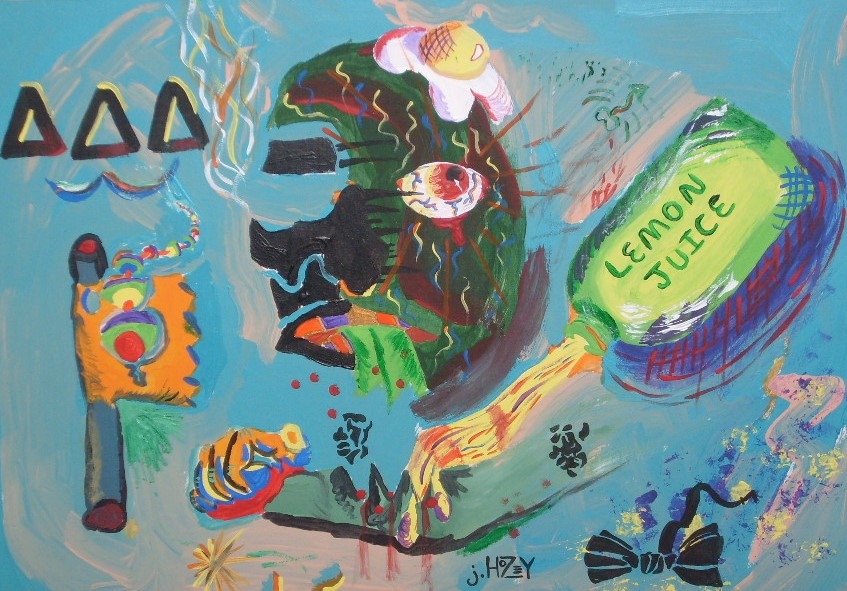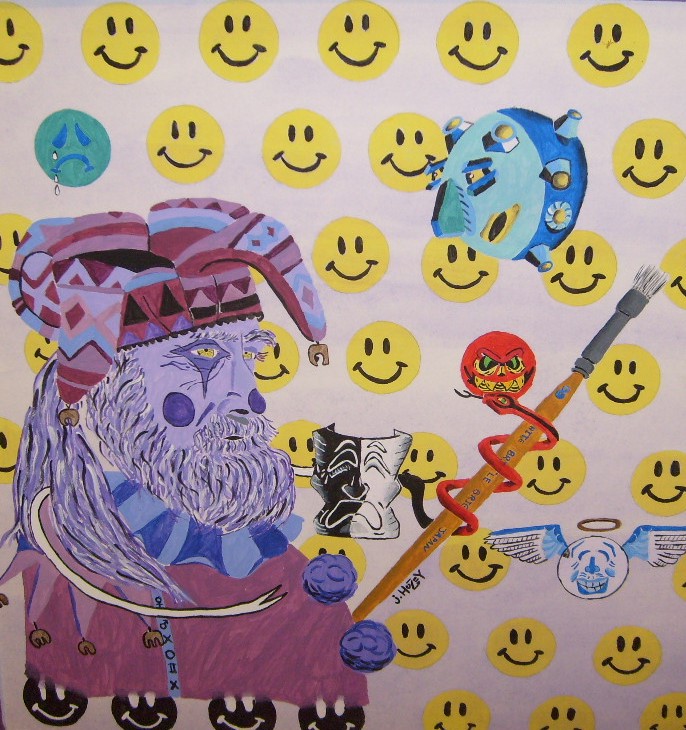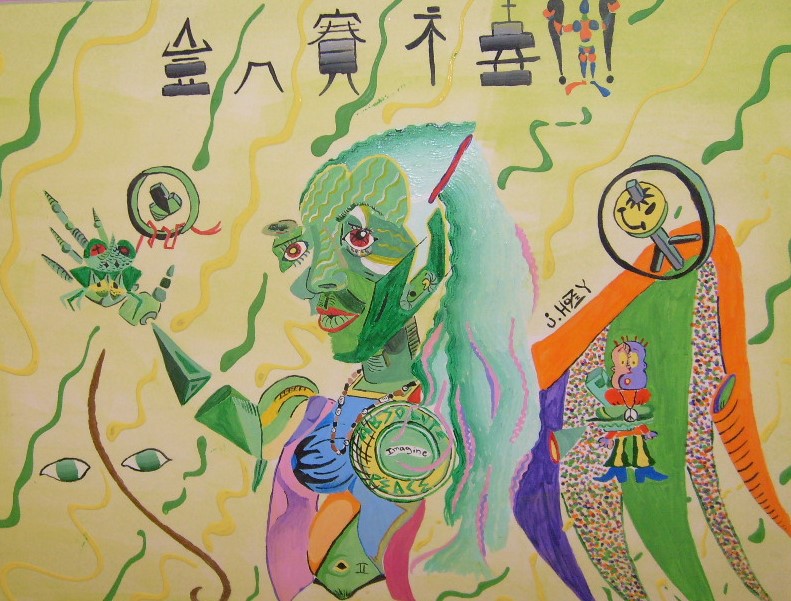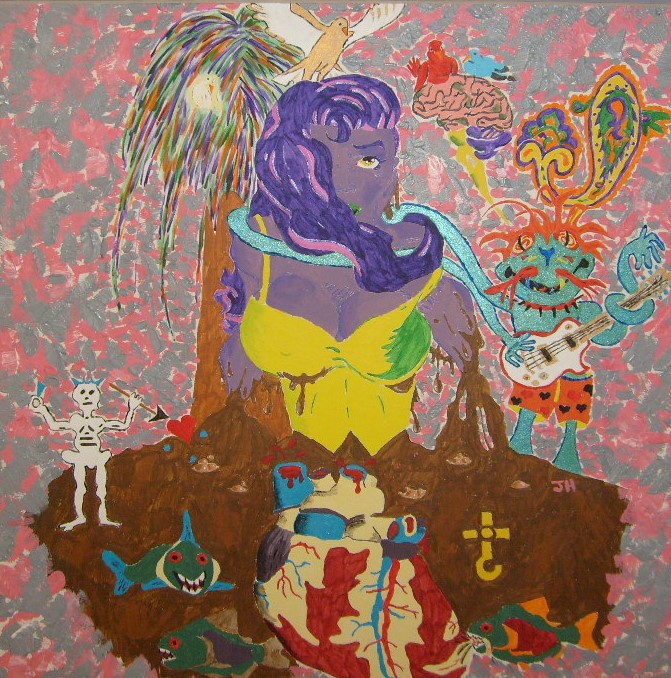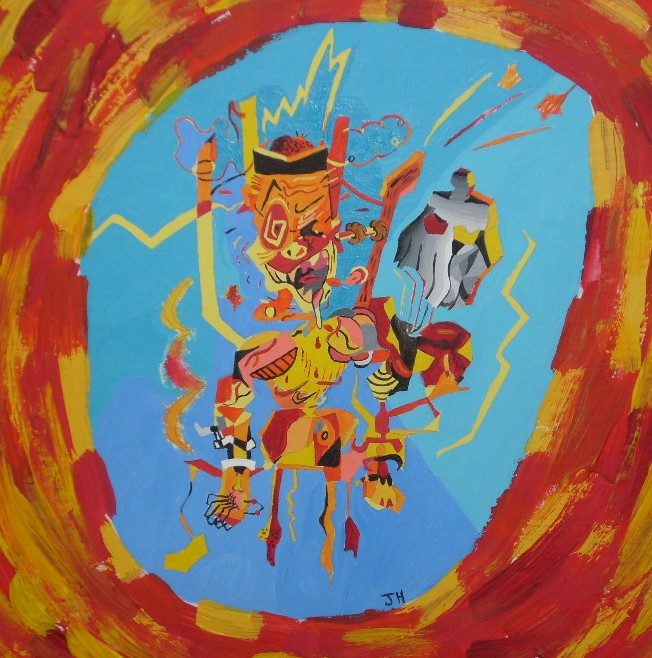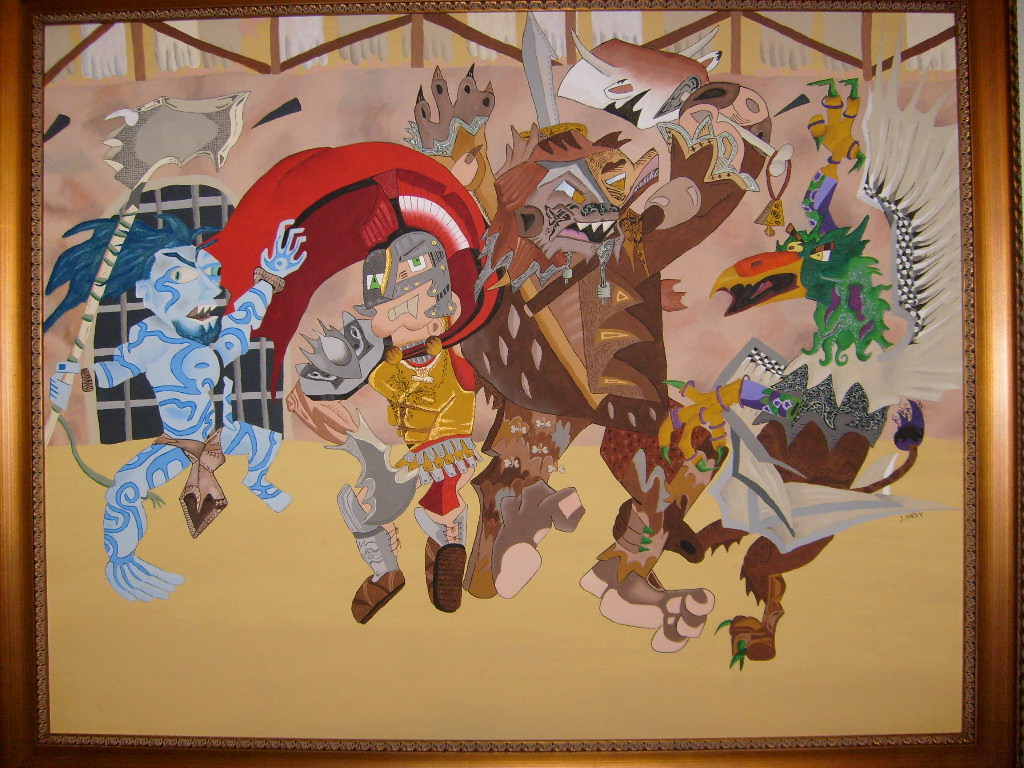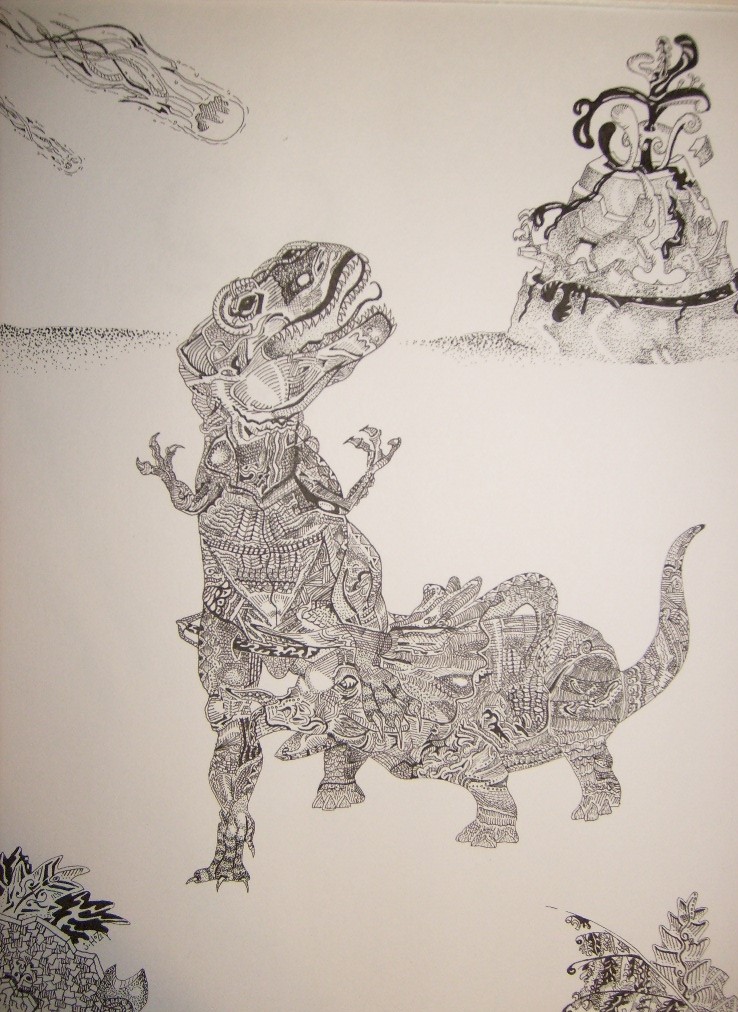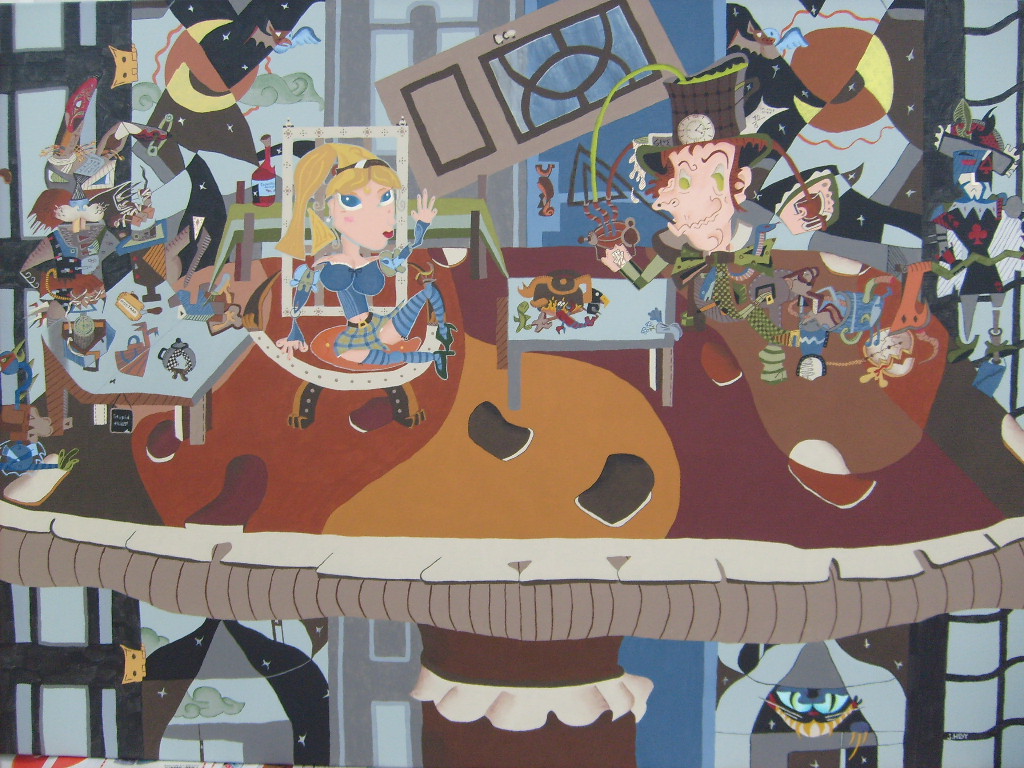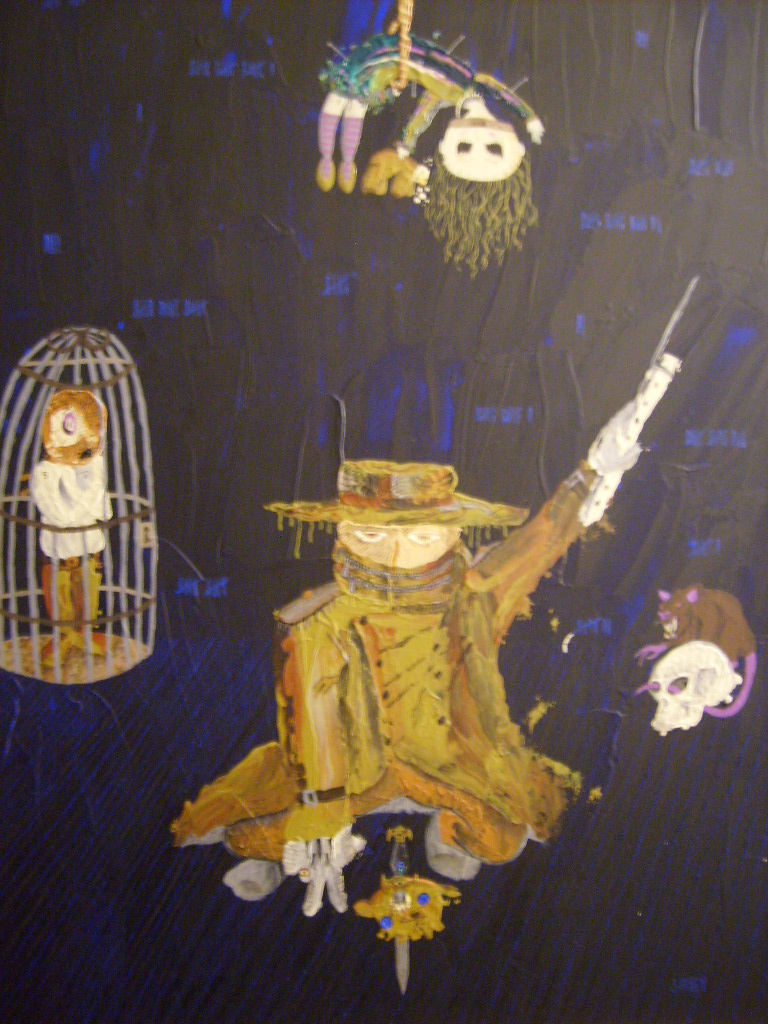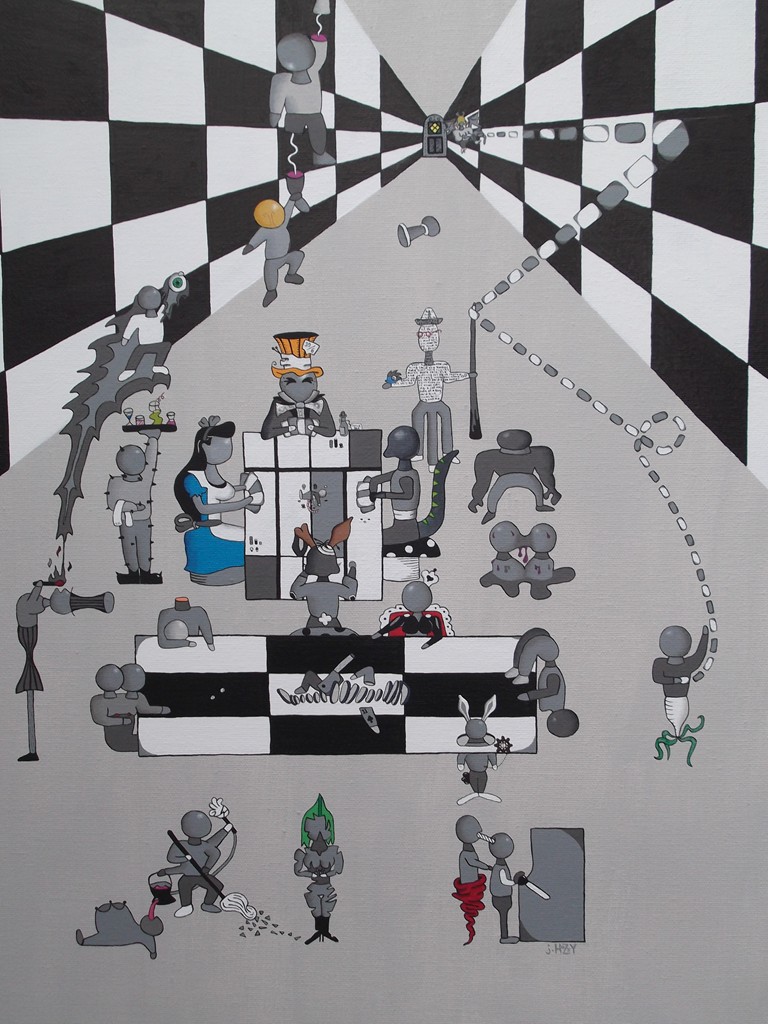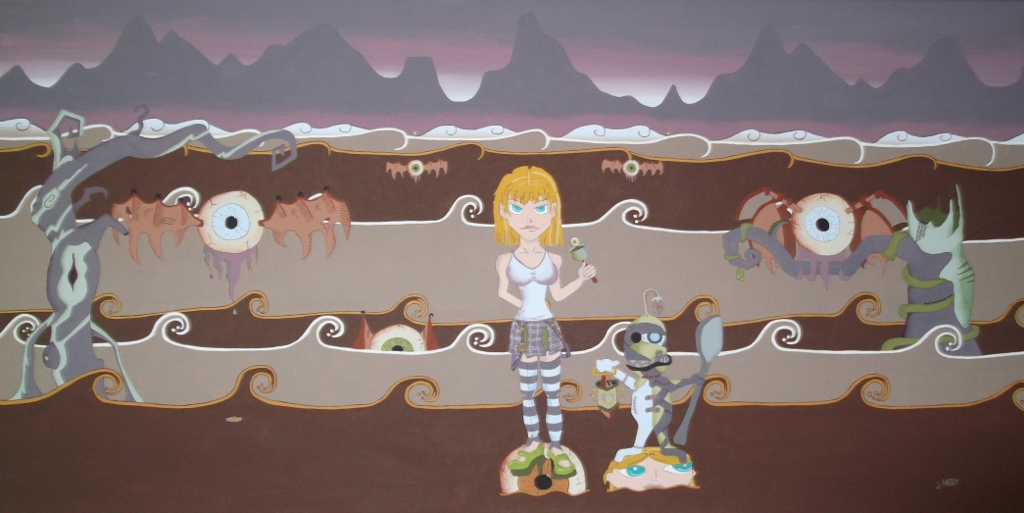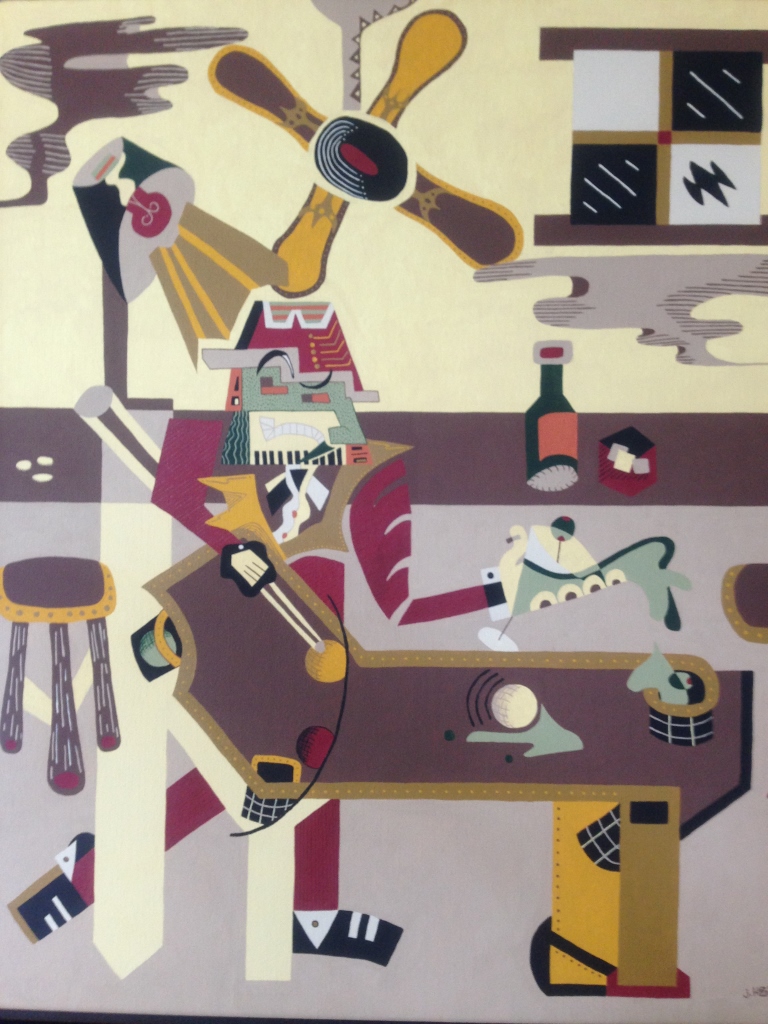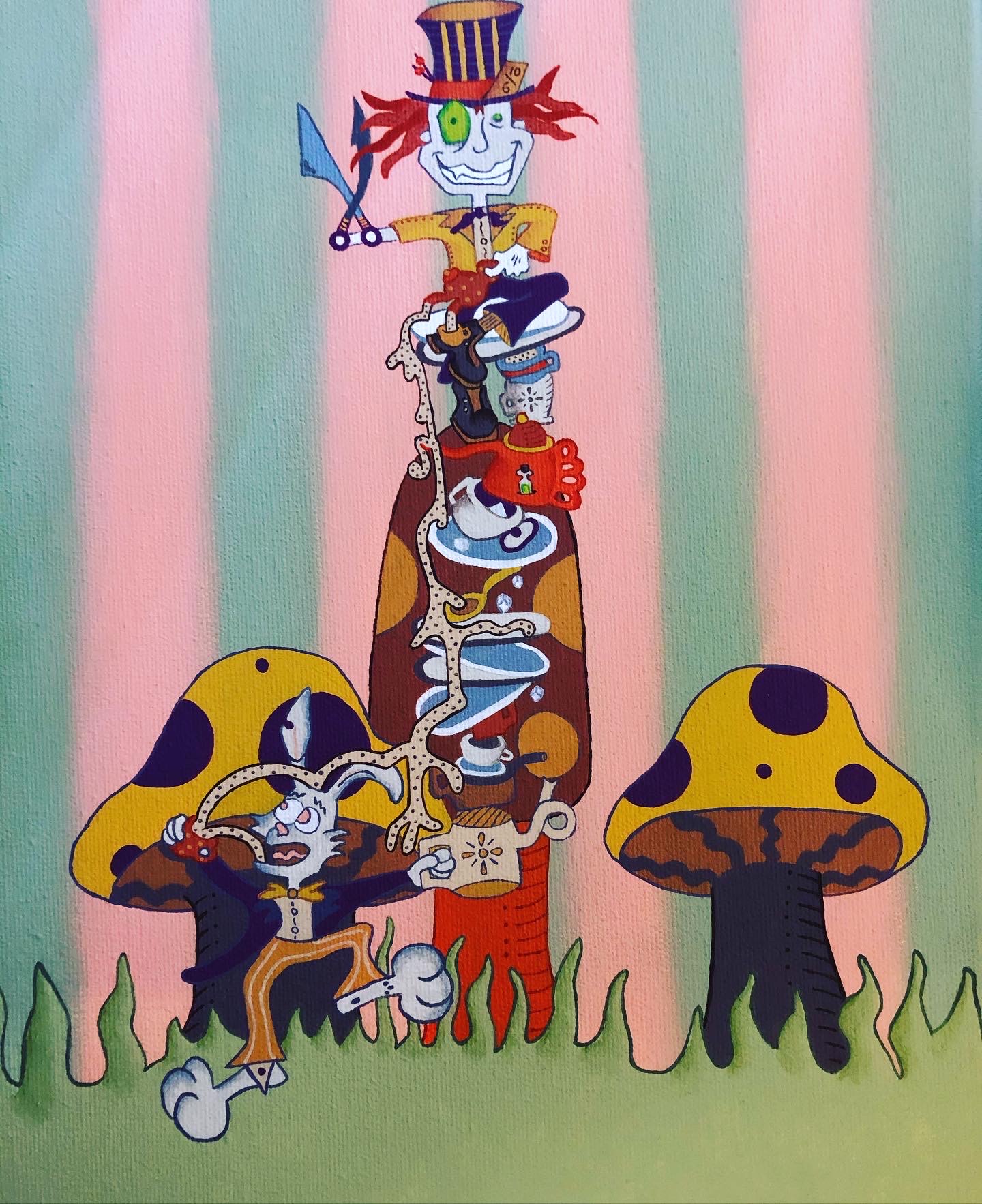Alice, Friends Should Make You Wonder Not Wander
The general idea behind the painting is to comment on the nature of friendships, as well as to comment on how the friendships we forge and the associations we have affect our actions and personalities, as further defined by the following elements in the picture:
1) The construction of Alice. As Alice sits at the tea party the right side of her, especially her leg, is beginning to twist much like the Mad Hatter’s twisted body. The left side of Alice is detached. Her arm and head are separating from her body much like the March Hare whose body parts are also detached. No matter what Alice may think, the longer she stays in Wonderland the more she becomes like her companions. Our relationships mimic this fact whether we like to admit it or not, especially if we are running with the wrong crowd and feel that our own example will affect them in a positive way. Normally bad association spoils useful habits.
2) Another possible interpretation is that Alice is the one affecting the Hatter and Hare. She has come to Wonderland not dressed in her usual attire. This could denote that she is actually drawn to people like herself and therefore she is bringing out certain traits within them that are already found within her. Depending on whether she is a negative or a positive influence will dictate if this is good or bad.
3) There is a small slate hanging on one of the tables which states “Stupid Things.” This is an element from the jury trial in the actual book. However, it is a stark reminder that in many cases long standing friendships are broken up over stupid things.
4) The Cheshire Cat is purposely located under the Mushroom where the painting is least congested. The cat could always appear anywhere and everywhere therefore giving himself a unique perspective. He represents the friends that we have that we normally get mad at. They are the ones that warn us that an
action we are about to take will lead to no good, but since we don’t see it or don’t want to see it we get mad at them. However, they are normally right because they are seeing it from the Cheshire Cat’s
perspective. They are normally the true friends that will still be there for us once we come to our senses.
5) The Executioner Card can be understood in two different ways. He is cutting off the door mouse’s tail while he is sleeping. Perhaps he represents the completely negative “friend” who will only ever serve to put us in harms way. They are the friendships we need to sever if we can see this. However, since the door mouse is sleeping he seems not to notice the act of the tail being cut. Sometimes we have friends who actually act in our behalf, behind the scenes so to speak, to keep us from a greater danger that could affect us even worse. Sometimes if we get wind of the situation only partly it may hurt us until we know the whole story and understand fully the saving act that the true friend performed.
6) The back grounds on the left and right side of the painting are “mirrored opposites”. Sometimes as friends we can look at the same item or situation but see something completely different. This can be
detrimental if it only leads to fights. However, this can be extremely helpful if we are able to help one another see things from a different point of view.
There are other elements in the picture straight from the movies or books. These include the “killing of time”, the “caucus race”, and the “flamingo with hedgehog”. These items are more open to interpretation but are easy to assign meaning to when thinking of how these can represent elements of friendship. (e.g.
friendships that are a waste of time, the sharing of silly/embarrassing experiences can help forge friendships; some friendships are very symbiotic etc.).

